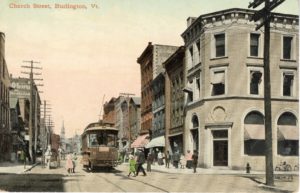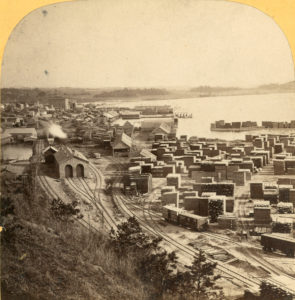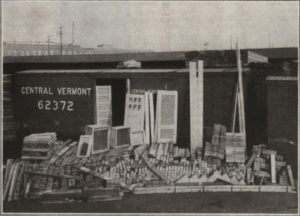 Kit Houses
Kit Houses
BVT Block 1

Burlington, Vermont, offers a fascinating case study on the popularity of modest, affordable kit and plan-built houses in the first half of the twentieth century. The growth of a middle class seeking affordable houses, the subdivision of large estates and farms to meet the demand for housing, the expansion of public transportation options, and access to rail lines for delivery to consumers—all these factors were present in the Burlington market. As a result, the city has what is likely a notable concentration of kit houses dating from about 1910 to 1940.

Vermont’s railroad system had been in development for over 70 years prior to the arrival of kit houses. The growing manufacturing industry in Burlington came to rely on this rail network to import raw goods and export finished products; by 1850, goods from Burlington could be shipped as far away as Chicago via a network of trains and boats.
This rail network benefited not only Burlington’s manufacturers but also out-of-state merchants who were now able to bring their own goods into Vermont at a minimal cost. Burlington’s location at the intersection of the Vermont Central Railway and Rutland Railroad would be key to shipping kit houses in the city.
